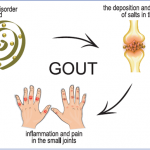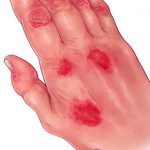ACR guidelines include recommendations for the management of patients with particular conditions or diseases. Guidelines are developed using a systematic process and are based on available evidence and the clinical experience and expertise of rheumatologists and other interested stakeholders. In the January issue of Arthritis & Rheumatology, Arthritis Care & Research and the Journal of…

How to Document a Patient’s Medical History
The levels of service within an evaluation and management (E/M) visit are based on the documentation of key components, which include history, physical examination and medical decision making. The history component is comparable to telling a story and should include a beginning and some form of development to adequately describe the patient’s presenting problem. To…

International Task Force Recommends Intra-articular Hyaluronic Acid for Knee OA
An international task force convened by the European Society for Clinical and Economic Aspects of Osteoporosis and Osteoarthritis (ESCEO) recommends systematic repeated intra-articular hyaluronic acid (HA) injections as second-line treatment for patients with knee osteoarthritis (OA). This is the first time a group of experts has made this recommendation, which is directed toward treatment of…

Clinical Guidelines for Sjögren’s Syndrome Focus on Biologics, Fatigue, Inflammatory Musculoskeletal Pain
The first clinical practice guidelines for Sjögren’s syndrome have been released, the culmination of an initiative by the Sjögren’s Syndrome Foundation.1 These standard-of-care recommendations are intended to provide consistency in practice patterns, inform coverage and reimbursement policies, lead to the design and implementation of educational programs, highlight the needs for future research and fill a…

How Gout Patients Can Stay on Target with the Go for Six Campaign
Gout patients need to lower their uric acid levels to 6.0 mg/dL or below and maintain that level. According to N. Lawrence Edwards, MD, MACP, MACR, an education campaign has been raising awareness of this fact and helping gout patients…

The ACR’s Gout Guideline Co-Author Shares Insight on Treating Pain, Ongoing Patient Care
WASHINGTON, D.C.—Despite the value of guidelines, they often “are not read,” said N. Lawrence Edwards, MD, professor of medicine specializing in rheumatology at the University of Florida, at the 2016 ACR/ARHP Annual Meeting talk titled, New & Emerging Therapies for Gout, as part of the ACR Review Course. Or if they are read, they aren’t…

ACR Recommends You Treat the Symptoms for Gout Patients
In 1982, my wife (also a rheumatologist) and I attended our first American Rheumatism Association (now the ACR) national meeting. After the meeting we stayed with a friend in a suburb of Boston, where we also had the opportunity to meet our hostess’ in-laws, a retired general practitioner and his wife. When her father-in-law shook…

FDA Update on Rituximab & Etanercept; Plus New ACP Gout Guideline
The FDA is considering an application for subcutaneous rituximab and has approved an application for etanercept to treat pediatric patients with plaque psoriasis…

Revised Retinopathy Screening Guidelines State Risks Linked to Hydroxychloroquine, Chloroquine
A large medical specialty society for ophthalmologists recently updated its recommendations for the screening of chloroquine (CQ) and hydroxychloroquine (HCQ) retinopathy.1 The recommendations from the American Academy of Ophthalmology (AAO) affect patients who may use CQ or HCQ for rheumatoid arthritis or systemic lupus erythematosus (SLE), as well as some inflammatory and dermatologic conditions. The…

2015 Treatment Recommendation Updates for Psoriatic Arthritis Address Comorbidities, New Medications
In May, the Group for Research and Assessment of Psoriasis and Psoriatic Arthritis (GRAPPA) published its recommendations for the treatment of psoriatic arthritis (PsA).1 The updated recommendations represent advances in drug development and availability since previous recommendations published in 2009, as well changes in treatment paradigms and the importance of associated aspects of the disease.2…